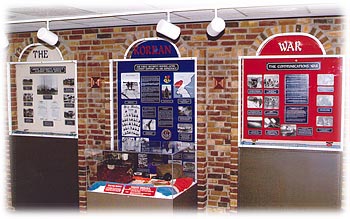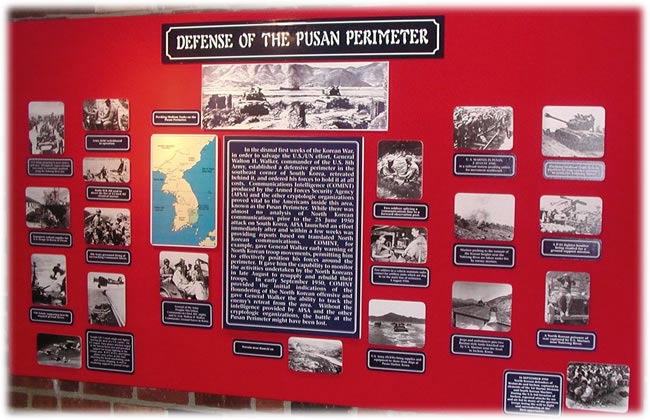

 In
1945, Korea was liberated from Japan, but split in two. The
Soviet Union aligned with North Korea, the Democratic People’s
Republic of Korea (DPRK.) The United States allied with South
Korea, the Republic of Korea.
In
1945, Korea was liberated from Japan, but split in two. The
Soviet Union aligned with North Korea, the Democratic People’s
Republic of Korea (DPRK.) The United States allied with South
Korea, the Republic of Korea.
On June 25, 1950, the North Koreans invaded the south. U.S.-led U.N. forces eventually pushed the DPRK back across the original dividing line, the 38th parallel. At that point, the Chinese entered the war and helped push the U.N. forces southward. The conflict continued for three years ending in 1953 with the signing of an armistice agreement.
Communications Intelligence played a role throughout the Korean War. Initially, the predecessor to the National Security Agency, the Armed Forces Security Agency (AFSA,) had no full-time collection against North Korea, nor even any Korean linguists. But in July 1950, analysis of Chinese civil communications indicated the movement of Chinese army elements to the Manchurian border, a forewarning of their involvement. AFSA rapidly trained personnel and turned its attention to Korea to support U.N. forces. Signals Intelligence, provided by AFSA, gave General Walker, commander of the U.N. forces, the information he needed to hold the Pusan Perimeter until General MacArthur’s attack at Inchon.

By late 1951, Army low-level intelligence from buried sound-detecting devices yielded information on enemy movements, supplies, and casualty reports. The new Air Force Security Service, with intercept sites along U.N. held islands near North Korea, provided near real-time information to its pilots flying over the DPRK, resulting in major successes in “MiG Alley.”
The purpose of wartime cryptology is to support the nation’s objectives and save American lives. During the Korean War, communications intelligence accomplished these goals but not without losses of their own.